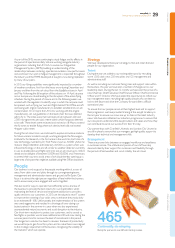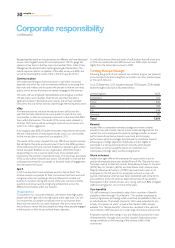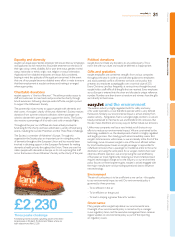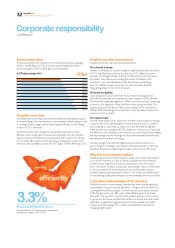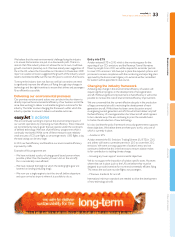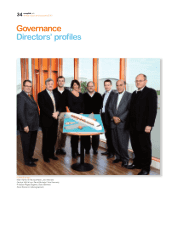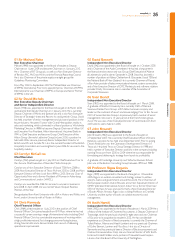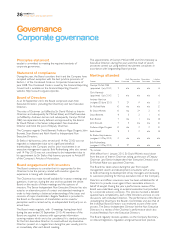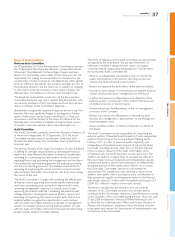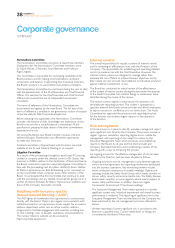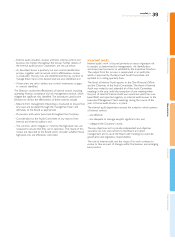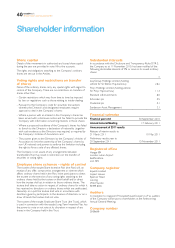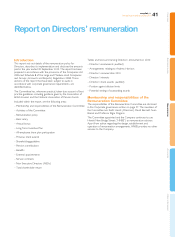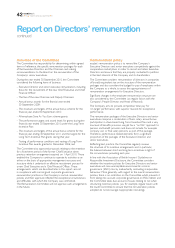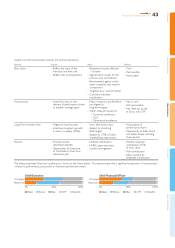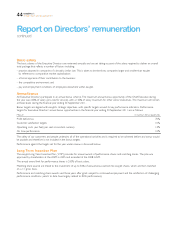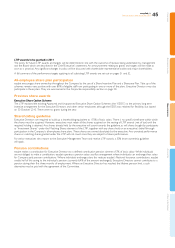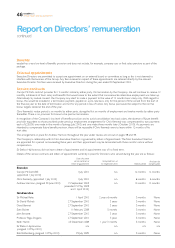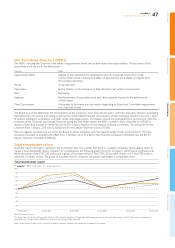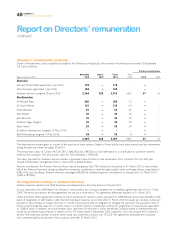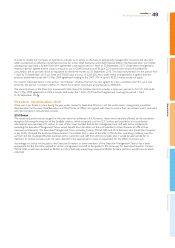EasyJet 2010 Annual Report Download - page 41
Download and view the complete annual report
Please find page 41 of the 2010 EasyJet annual report below. You can navigate through the pages in the report by either clicking on the pages listed below, or by using the keyword search tool below to find specific information within the annual report.
Overview Business review Governance Accounts Other information
easyJet plc
Annual report and accounts 2010
39
–Internal audit considers, reviews and tests internal control and
business risk matters throughout the Group. Further details of
the internal audit function’s operations are set out below;
–As described above, a quarterly risk and control identification
process, together with an annual control effectiveness review,
is conducted. The key risks are identified and the key controls to
manage these risks to the desired level are also identified; and
–Action plans are set to address any control weaknesses or gaps
in controls identified.
The Directors review the effectiveness of internal control, including
operating, financial, compliance and risk management controls, which
mitigate the significant risks identified. The procedures used by the
Directors to review the effectiveness of these controls include:
–Reports from management. Reporting is structured to ensure that
key issues are escalated through the management team and
ultimately to the Board as appropriate;
–Discussions with senior personnel throughout the Company;
–Consideration by the Audit Committee of any reports from
internal and external auditors; and
–The controls, which mitigate or minimise the high-level risks, are
reviewed to ensure that they are in operation. The results of this
review are reported to the Board which considers whether these
high-level risks are effectively controlled.
Internal audit
Internal audit’s work is focused primarily on areas of greatest risk
to easyJet, as determined by management’s risk identification
and assessment processes as validated by the Executive Directors.
The output from this process is summarised in an audit plan,
which is approved by the Board and Audit Committee, and
updated on a rolling quarterly basis.
The Head of Internal Audit reports to the Chief Financial Officer
and the Chairman of the Audit Committee. The Head of Internal
Audit was invited to and attended all of the Audit Committee
meetings in the year (with the exception of one meeting when
the post of Head of Internal Audit was vacant but which has now
been filled) and reported regularly on internal audit reviews to the
Executive Management Team meetings during the course of the
year. A formal audit charter is in place.
The internal audit department reviews the extent to which systems
of internal control:
–are effective;
–are adequate to manage easyJet’s significant risks; and
– safeguard the Company’s assets.
The key objectives are to provide independent and objective
assurance on risks and controls to the Board and senior
management and to assist the Board with meeting its corporate
governance and regulatory responsibilities.
The role of internal audit and the scope of its work continue to
evolve to take account of changes within the business and emerging
best practice.


